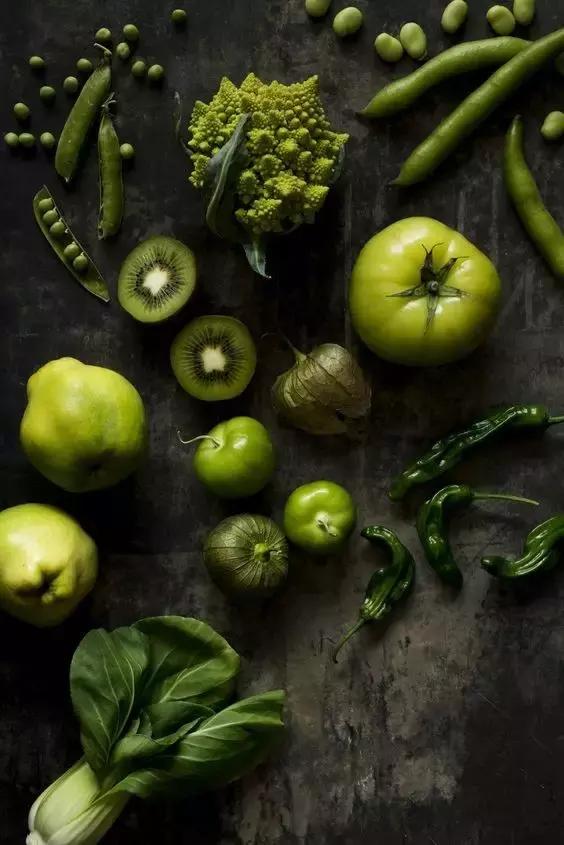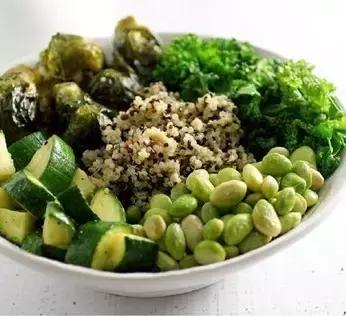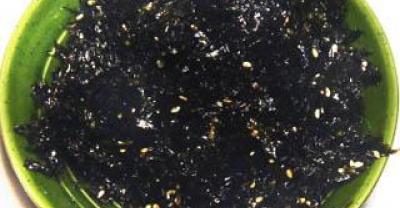High-fiber vegetables, did you eat right?
When it comes to dietary fiber in food,
The first thing that comes to mind
Are they those vegetables with silk and tendons?
Such as celery, carrots and so on.
Supplement the baby with dietary fiber every time
Mothers can't get away with those dishes.
But in fact,
The idea that shredded, gluten vegetables contain more dietary fiber
It is a common misunderstanding of mass nutrition.

Dietary fiber, which is often misunderstood
How is dietary fiber defined?
Dietary fiber includes all food ingredients that cannot be absorbed in the small intestine and can enter the large intestine. According to the different degree of dissolution, it can be divided into soluble dietary fiber and insoluble dietary fiber.
Soluble fiber can not only dissolve in water but also absorb water and expand. It is a kind of fiber that can be digested by microorganisms in the large intestine. It often exists in plant cell sap and stroma, mainly pectin, plant gum, viscose and so on.
Insoluble fibers are neither soluble in water nor glycolytic by microorganisms in the large intestine. It often exists in the roots, stems, stems, leaves, barks and fruits of plants, mainly cellulose, hemicellulose, lignin and so on.
Looking at this definition, we can see that the key to the selection of dietary fiber is whether the small intestine can be digested and absorbed and whether it can enter the large intestine. A class of plants may contain both soluble and insoluble dietary fiber. Therefore, the standard for our statistics of fiber content is to add up the content of two kinds of fiber.
Many people often mistakenly think that whether they plug their teeth and prick their throat is the criterion of dietary fiber. So, just because a food looks gluten doesn't mean it's high in fiber. A food without tendons doesn't sting in the throat, nor does it have a high fiber content.
What is the misunderstood "tendon"?
So, what are the tendons in vegetables? It is the vascular bundle of plants, that is, the "vascular" system of plants. Through these bundles of tough pipes, the plant sends the nutrients absorbed by the roots to the upper part and the nutrients synthesized by the leaves to the bottom. However, with these tendons, it does not mean high fiber content. For example, although Chinese cabbage has tendons, the fiber content in most places without tendons is very low, with an average fiber content of only 0.8%.
When judging, you can't judge people by their appearance.
Foods without tendons may not have a low or even higher fiber content. For example, all kinds of tender beans and pods are high in fiber. Edamame, for example, has a soft texture after cooking, but it does not prevent it from winning the championship of fiber in vegetables (dietary fiber content is as high as 4.0%). The tender broad beans with 3.1% content and the tender peas with 3.0% content are more delicate and delicious, the beans with 1.5% content are also quite crisp, and their fiber content is much higher than that of celery stalk (1.2%). The legendary ultra-high-fiber leek contains only 1.4% fiber.
In addition to tender beans, seemingly ungluten vegetables such as kale (1.6%), spinach (1.7%), amaranth (1.8%) and broccoli (1.6%) also contain more fiber than celery stalks.
Find out the law of high-fiber vegetables
Generally speaking, dark green vegetables have more fiber than light-colored vegetables.
The fiber content of Chinese cabbage is 0.8%, while that of Chinese cabbage and rape with darker leaves is 1.1%. White cauliflower is 1.2%, green broccoli is 1.6%, and lettuce is only 0.6%.


Why supplement dietary fiber?
Provide intestinal microflora power
Our intestines contain a large number of symbiotic bacteria, which can help us better break down food and absorb nutrients, but also affect human health in many different ways. For most intestinal bacteria, adequate dietary fiber allows them to function properly.
Prevent food allergy
Eating high-fiber foods rich in vitamin A can effectively prevent food allergies, a new study suggests.
High-fiber foods rich in vitamin A can change intestinal bacteria and promote the production of short-chain fatty acids, which work on the immune system and prevent allergic reactions caused by dendritic cells. dendritic cells are responsible for controlling food allergic reactions.
Prevention and treatment of constipation
The biggest characteristic of dietary fiber is strong water absorption, if it can not be completely digested in the intestinal tract, it will accelerate the pace of intestinal peristalsis after water absorption, which is conducive to the excretion of waste and waste gas in the body.
Reduce blood pressure and lipid
Cellulose regulates blood sugar and helps prevent diabetes. It can also reduce the absorption of fat in the digestive process, thereby reducing the level of cholesterol and triglyceride in the blood, preventing and treating hypertension, cardio-cerebrovascular diseases.


How to eat high-fiber vegetables?
I'm not afraid to cut or cook.
The property that fiber cannot be digested by the human small intestine will not be changed by physical treatment. Whether chopped or boiled, the fiber will not be damaged. Therefore, high-fiber food, used as stuffing, although it appears to be more "tooth-saving" and more suitable for the elderly and children, it will not have any effect on the physiological role of dietary fiber.
The characteristics of "liking meat"
It has been mentioned earlier that dietary fiber can be divided into two types: insoluble fiber and soluble fiber. Among them, insoluble fiber makes people feel a little "thick", and it is easy to be afraid of difficulties when eating. But it's not hard to change that feeling. Because insoluble fibers have a temper, they like oil. No matter how thick and high the fiber content is, as long as it is braised or soaked in oil, it will become soft.


High-fiber vegetables on Xugeng Farm
Carrot
Shanghai and Yantai
Food fiber content: 3.2g/100g
Carrots contain more than ten kinds of nutrients, such as carotene and vitamin B1, B2, C, D, E, K, folic acid, calcium and food fiber, which can make the human body absorb nutrients fully. The human body absorbs nutrients more comprehensively. In addition, carrots contain plant fiber, which can improve human metabolism and naturally achieve the goal of weight loss.
Spinach
Shanghai and Yantai
Food fiber content: 2.8g/100g
Spinach contains a lot of plant crude fiber, which can promote intestinal peristalsis, promote pancreatic secretion and help digestion. Spinach also contains a variety of trace elements, which can promote human metabolism and enhance resistance.
Brussels sprouts
Shanghai
Food fiber content: 3.8g/100g
Native to the Mediterranean coast, with fresh and tender lobules as edible parts, it is one of the important vegetables in Europe and North America since the 19th and 20th centuries. The globule protein content of cabbage is very high, which ranks first among cabbage vegetables, and the contents of vitamin C and trace element selenium are also high.
Kale
Shanghai
Food fiber content: 2.7g/100g
Kale is rich in nutrients, containing a lot of vitamin A, C, B2 and a variety of minerals, especially high content of calcium, iron and potassium. The content of vitamin C is very high, and the content of vitamin C in every 100 grams of tender leaves reaches 153.6 million 220 mg, which is comparable to that of broccoli in cabbage.
Kale
Yantai
Food fiber content: 2.1g/100g
The vegetable moss of kale is tender, crisp, sweet and delicious, with fat and tender bolts and tender leaves for consumption. Every 100 grams of fresh cabbage moss contains 92-93 grams of water, vitamin C 51.3 ~ 68.8 mg, and quite a lot of minerals. It is a kind of nutritious vegetable in cabbage vegetables, which can be fried, soup, or side dish.
Cabbage
Yantai
Food fiber content: 1.8g/100g
Cabbage ultra-low calories, but also can inhibit fat absorption, can enhance the sense of satiety, eat more will not exceed the calorie limit! And the vitamins contained in it can effectively inhibit the absorption of fat. In addition to losing weight, cabbage can also help reduce fire and swelling.
Celery
Yantai
Food fiber content: 2.7g/100g
Every 100g fresh vegetables contain 3g carbohydrates, 2.2g protein, 0.3g fat, VA240 international unit, VB10.03mg,VB20.03mg,VC10mg, calcium 170mg, phosphorus 34mg, iron 0.5mg. The content of VP in leaves is very high.
Soybeans
Yantai
Food fiber content: 4.8g/100g
Soybeans are nutritious, in which the content of protein is 2 times higher than that of pork and 2.5 times that of eggs. The amino acid composition of soybean protein is similar to that of animal protein, in which the amino acid is close to the ratio needed by the human body, so it is easy to be digested and absorbed.
Some sources of information:
1. Guokr
two。 Dietetic Science Journal http://mp.weixin.qq.com/s/XuFL8yykS4RM5Q8JUuOyYw
3. High-fiberdiet alters gut bacteria to protect against food allergy. MNT.2016 June26.
Source: Xugeng Happy Farm
You can feel the real farm by moving your fingers.
Read more related articles, welcome to follow the official account: pntar4
- Prev

Seven vegetables suitable for hypertension and diabetes at the same time
Cauliflower is rich in vitamin C, carotene, flavonoids, vitamin K, potassium, phosphorus, iron, calcium and other ingredients, helping to reduce estrogen in the human body.
- Next

After eating vegetables all my life, did you eat it right?
We eat every day, vegetables are essential, but for vegetables in the cooking process, do you really retain its nutrition? Today, I.
Related
- Where is it suitable to grow horseradish in China? it is expected to see the middle altitude horseradish in Alishan.
- How to prevent tomato virus disease reasonably? (Control methods included)
- Many people like to plant towel gourd on the balcony. What are the main points of this method and management?
- What crops can chili peppers be mixed with?
- Fertilization techniques and matters needing attention in Tomato
- What are the grafting techniques for peach seedlings in spring?
- Harm and control methods of root swelling disease of Chinese cabbage
- What are the pests of sweet potatoes? How to prevent and cure it?
- Symptoms, causes and Control methods of navel Rot in Tomato
- The cause of "Cucumber rotten bibcock" in Farmers' planting Cucumber and its Control Plan

